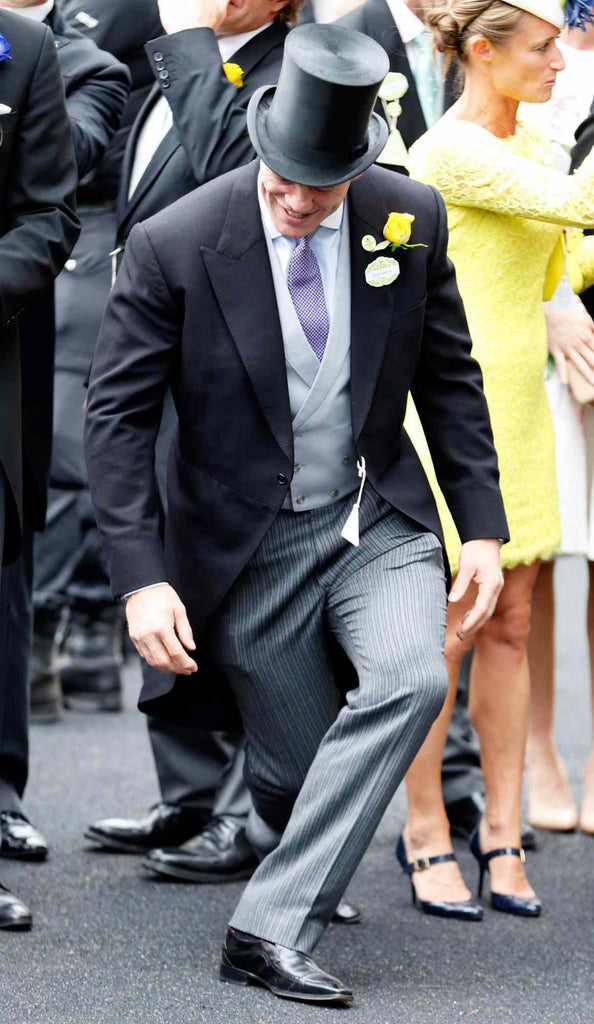
In a world that constantly challenges traditional norms and stereotypes, questions about gender roles and expectations continue to emerge. One intriguing aspect of this discussion is the practice of curtsying, a gesture historically associated with women. But do guys curtsy? In this blog post, we will delve into the origins of curtsying, its significance, and whether or not it has a place in the modern world.
The Curtsy: A Brief History
The curtsy, a formal gesture involving a downward movement of the body, especially the head and knee, has deep historical roots. It originated as a display of respect and submission, often performed in the presence of royalty or nobility. While it's commonly associated with women, men in certain historical contexts also practiced similar gestures.
Gendered Expectations
Historically, social norms dictated strict gender roles, and certain behaviors were considered appropriate for either men or women. The curtsy, with its graceful and modest nature, became emblematic of femininity. Women were expected to curtsy as a sign of deference, highlighting the hierarchical structure of society.
However, societal expectations have evolved over time, and the rigid gender roles that once governed behavior have loosened. As notions of equality gained prominence, traditional gestures like the curtsy have come under scrutiny.
Modern Interpretations
In today's world, where equality and inclusivity are championed, the question arises: do guys curtsy? The answer isn't straightforward, as it depends on various factors, including cultural context, personal preferences, and the specific occasion.
Cultural Variances
Cultural traditions play a significant role in shaping behaviors and customs. In some cultures, gendered gestures may still be observed, while in others, there's a more fluid approach. For example, in certain European royal circles, men might perform a variation of the curtsy as a mark of respect. However, in everyday situations, such gestures are rare.
Personal Preferences
Individual preferences also play a crucial role in determining whether guys curtsy. Some men may embrace traditional gestures as a form of cultural appreciation or personal choice, while others may reject them as outdated or restrictive. The evolving nature of societal norms allows individuals to express their identity in ways that feel authentic to them.
Occasional Formalities
In formal settings, especially those rooted in tradition or protocol, men may partake in gestures similar to the curtsy. These occasions could include formal ceremonies, state events, or cultural rituals where adherence to established norms is emphasized. However, these instances are more likely to be exceptions rather than the norm in contemporary society.
The Fluidity of Gender Expression
As discussions around gender identity and expression become more mainstream, the rigid boundaries that once defined masculinity and femininity are breaking down. The concept of gender as a spectrum rather than a binary has opened up new possibilities for self-expression.
Challenging Gender Norms
Challenging traditional gender norms is not just about rejecting certain behaviors but also about redefining them. The question of whether guys curtsy invites us to reconsider the boundaries we place on gendered behaviors and to recognize that expressions of respect and courtesy need not be tied to a specific gender.
Gender-Inclusive Etiquette
In the spirit of inclusivity, modern etiquette is evolving to be more gender-inclusive. Politeness and respect are qualities that transcend gender, and as such, gestures like curtsying may become less gender-specific. In a world that values diversity, etiquette is adapting to reflect the rich tapestry of identities and expressions.
Navigating Tradition and Progress
The intersection of tradition and progress is a complex terrain to navigate. As we strive for a more inclusive and egalitarian society, we must also acknowledge the importance of preserving cultural heritage. Finding a balance between honoring traditions and embracing progressive ideals requires thoughtful consideration.
Preserving Cultural Heritage
Cultural practices, including traditional gestures, are integral to preserving the identity of communities. While some customs may be reevaluated in the context of modern values, others can be retained as a link to the past. The challenge lies in discerning which aspects contribute positively to our shared heritage and which may perpetuate outdated norms.
Embracing Change
As society evolves, so too must its customs. Embracing change doesn't mean discarding tradition entirely but rather adapting it to align with contemporary values. This approach ensures that cultural practices remain relevant and meaningful, allowing them to endure across generations.
Final Words
The question of whether guys curtsy is not just a matter of gesture; it's a reflection of the broader conversation surrounding gender roles, traditions, and the evolving nature of society. While the curtsy has historical significance rooted in gendered expectations, its relevance in the modern world is subjective.
As we navigate the delicate balance between tradition and progress, it's essential to approach these questions with an open mind. Whether a man chooses to curtsy or not should be a personal decision, free from the constraints of rigid gender norms. In a world that celebrates diversity, our expressions of respect and courtesy should be as varied as the individuals who comprise our global community.
In conclusion, the evolution of gender roles and expressions challenges us to reconsider the customs that have shaped our interactions for centuries. The curtsy, once a symbol of submission, is now an opportunity to redefine what it means to show respect and courtesy in a world that thrives on inclusivity. So, do guys curtsy? The answer lies in the fluidity of identity and the ever-changing landscape of societal norms.
